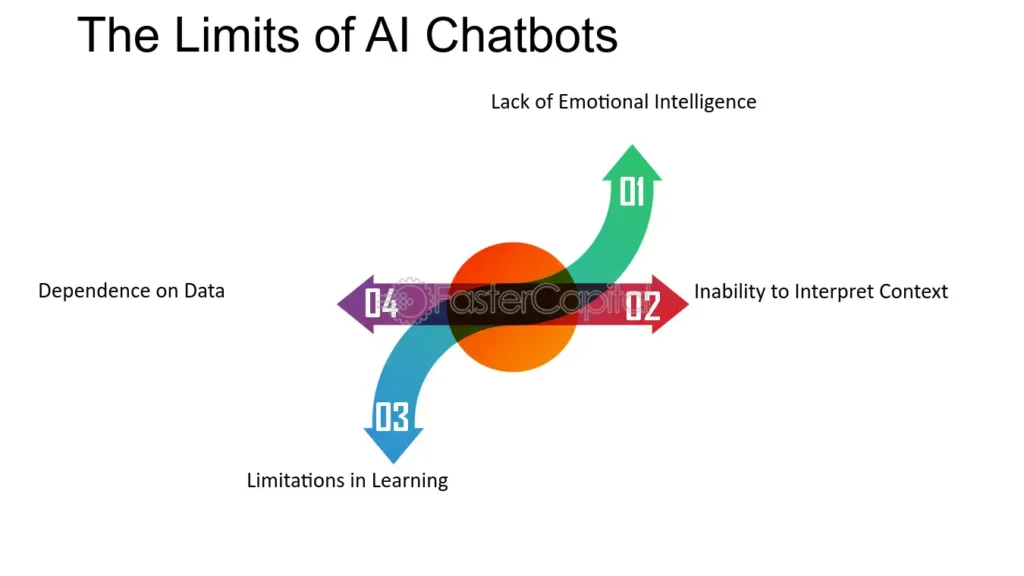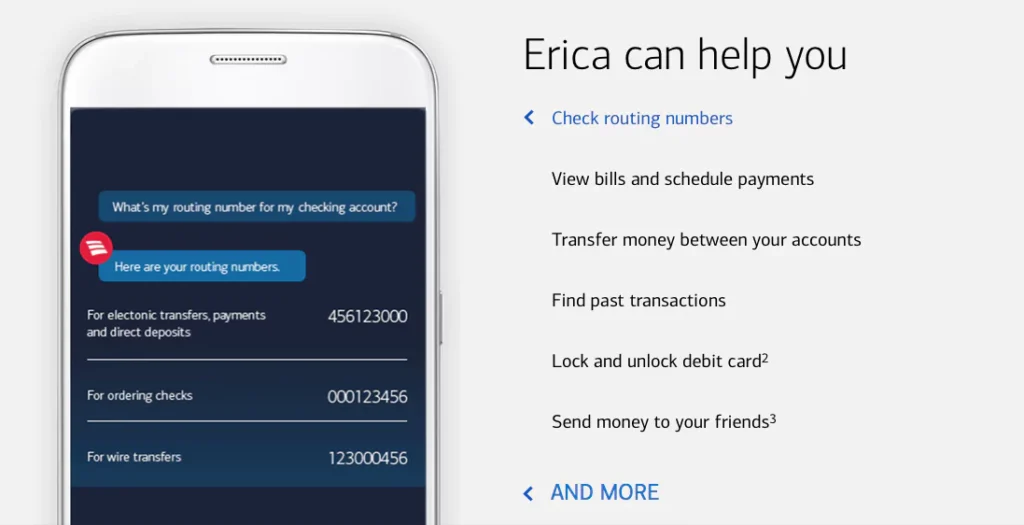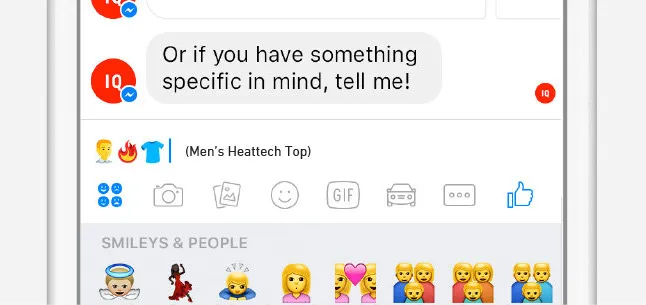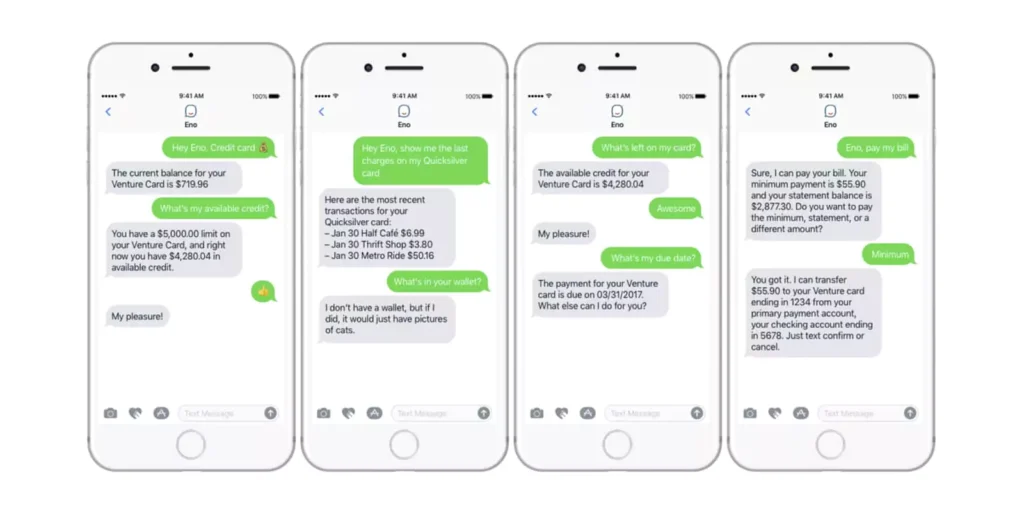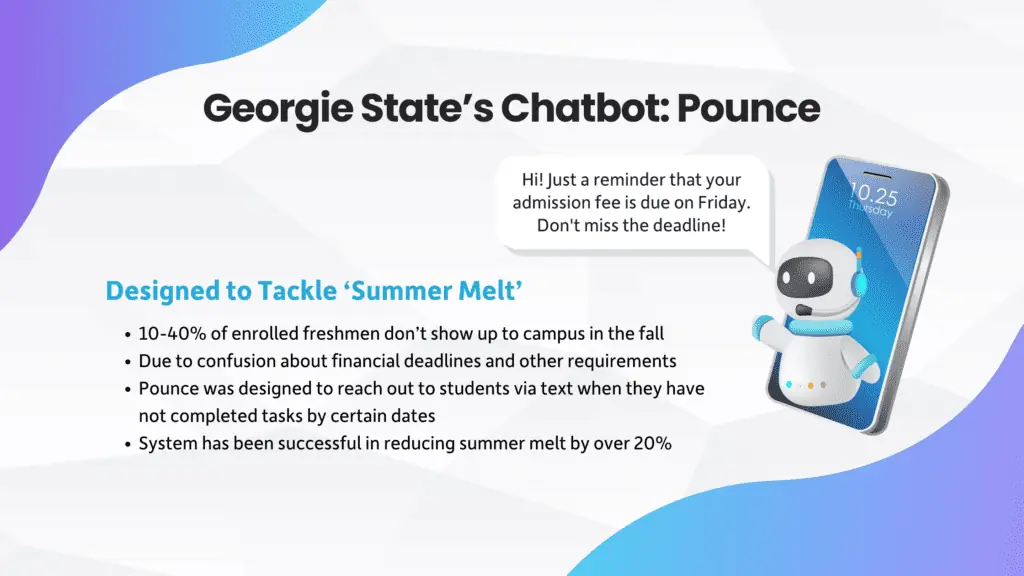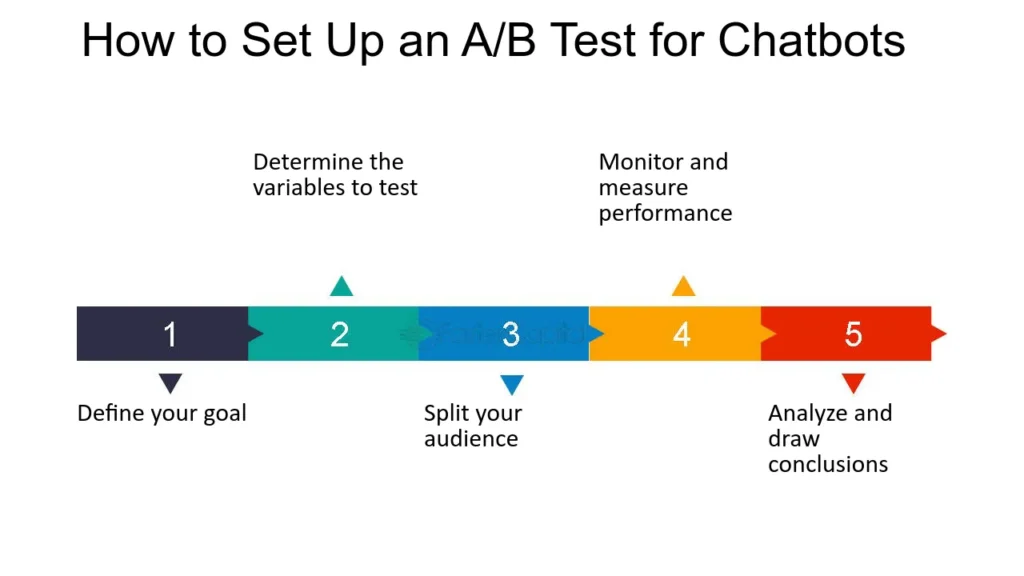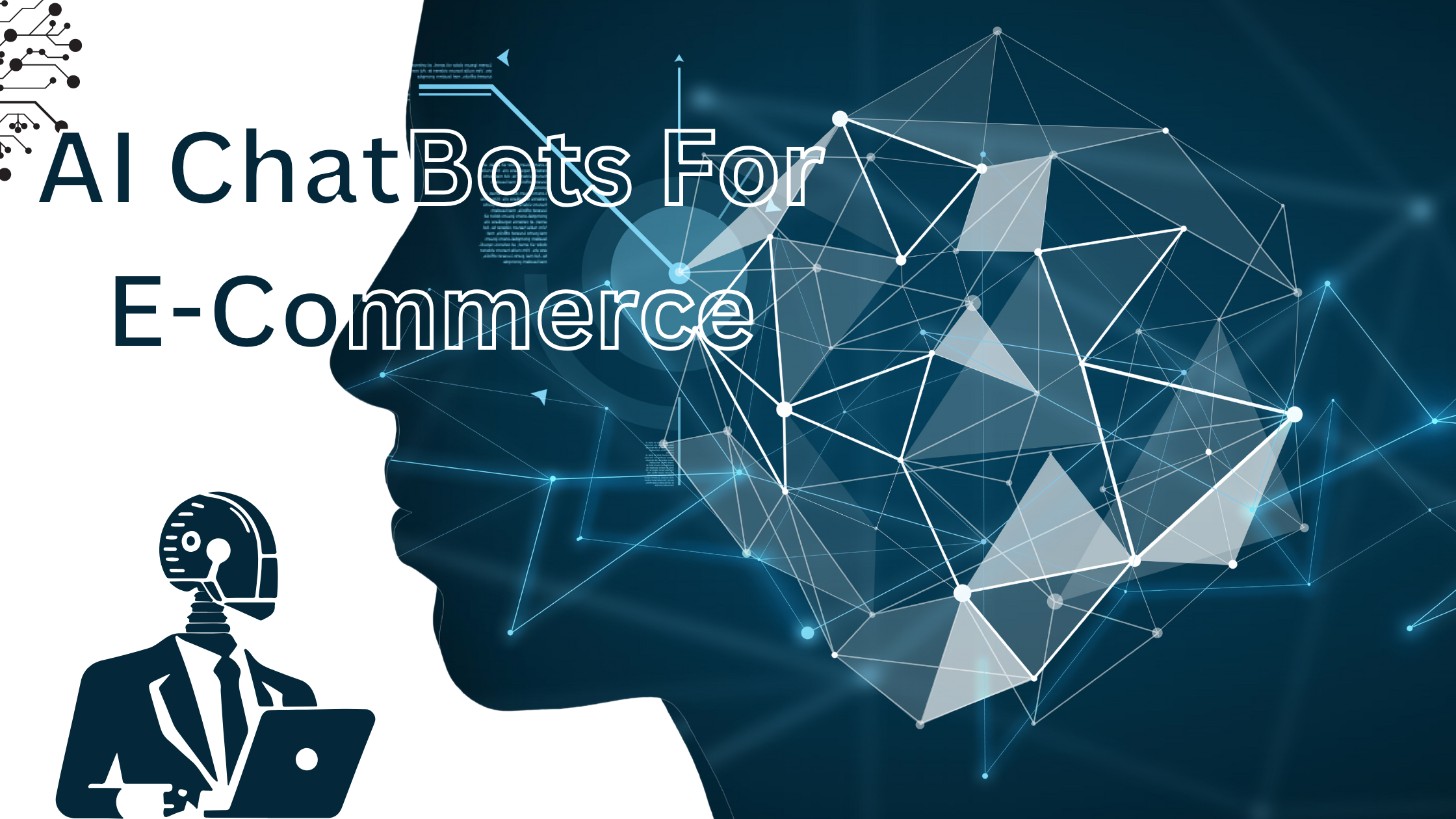Chatbots have changed how businesses talk to customers, affecting marketing in many industries.
As this shift continues, businesses are increasingly turning to chatbot marketing, which uses automated chat agents to engage potential customers and make their buying experience smoother.
Building on this idea, this guide will cover the ethics of chatbot marketing, how different industries use them, and strategies for using them effectively. Additionally, we’ll compare chatbot marketing to traditional customer support and explore how chatbots for customer service and surveys are transforming the field.
Ethical Guide to Chatbot Marketing
Key Ethical Considerations in Chatbot Marketing
When using chatbots in marketing, it’s important to think about the ethics involved. One key aspect of this is transparency—customers should always know they’re chatting with a bot, not a person.
A great example of this is Sephora, which uses a chatbot named Sephora Virtual Artist as part of its marketing efforts. This chatbot clearly identifies itself as AI, offering an engaging experience while ensuring users understand their data is being used to personalize recommendations.
In addition to transparency, ethical chatbot marketing requires honesty in communication, avoiding misleading practices, and ensuring that the chatbot’s actions reflect the company’s values.

Comply with Data Protection Regulations
Protecting user data and privacy is really important in chatbot marketing. It not only builds trust with users but also helps businesses stick to the law. To achieve this, companies need to follow data protection laws, like GDPR in Europe and CCPA in California. They have to get clear permission from customers before collecting any personal info.
This means the companies should explain exactly how the data will be used. Not only that, the comapnies should also give users options to access, change, or even delete their information.
Keep in mind following these rules is just the beginning. Because once the companies are compliant, they need to focus on keeping their security measures up-to-date. This involves installing the latest updates, keeping an eye out for unusual activity, and regularly checking for risks. These actions are needed to prevent breaches and protect user data.
For a concrete example, look at Bank of America’s chatbot, Erica. Erica not only follows data protection rules but also uses strong security measures, like encryption. By doing so, it helps protect user data and build trust.
This example shows how combining strong security with compliance can really enhance chatbot marketing efforts.
Managing User Consent Effectively
When dealing with user consent for chatbots, companies need to keep things clear and simple.
They should always ask for permission in a straightforward way. Plus, it’s important to give users the option to say yes or no. Explaining how their data will be used helps build trust and makes users feel more at ease.
This transparency makes users feel more in control of their own information. On top of that, companies should keep records of who has given consent and let users change their minds if they want to.
For example, H&M’s chatbots let users decide whether to share their data or not. This way, customers make all the decisions about the safety of their privacy.
Reducing Bias in Chatbot Marketing and Ethical Issues
Chatbots can sometimes be biased because of the data they were trained on. For example, if a chatbot was trained mostly with data from one area, it might not respond well to people from different places. To fix this, companies should use a variety of data when building the chatbot. This helps the chatbot treat everyone fairly.
Just like students need different textbooks to learn well, chatbots need diverse data to give balanced responses. Companies should also keep an eye on the chatbot’s interactions to catch any biased behavior early.
Another good idea is to have a system where users can report biased responses. This feedback helps companies find and fix problems quickly, making sure the chatbot stays fair and useful.
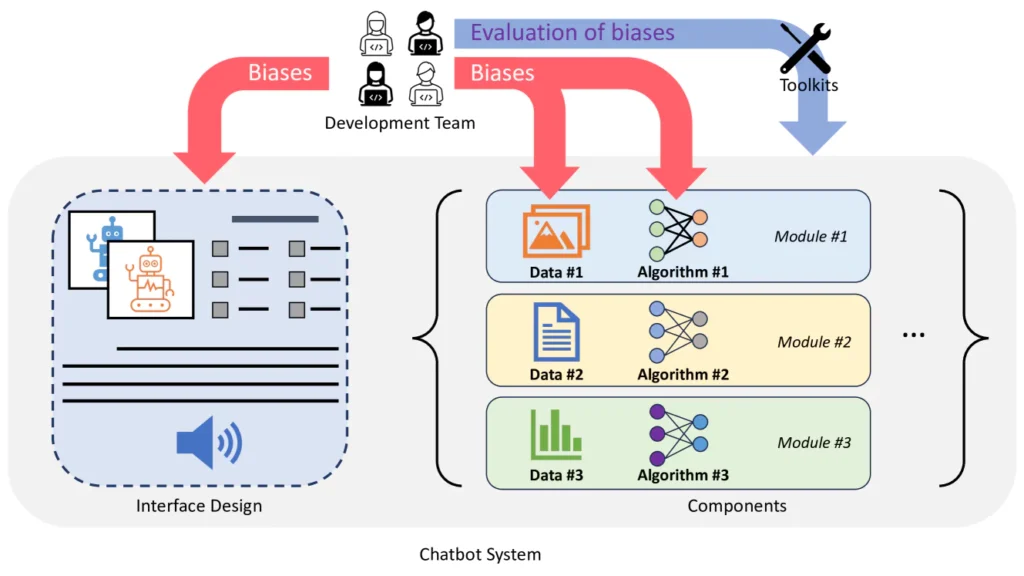
Success Stories: Industries Thriving with Chatbot Marketing
Chatbots are helping many industries in different ways.
According to Capgemini, about 36% of marketing teams are currently using chatbots and AI to interact with customers at their companies. Additionally, 20% plan to start using them in the next six months.
In retail, chatbots make shopping more personalized. In healthcare, they help with scheduling appointments and answering patient questions. Similarly, in finance, chatbots provide support and help prevent fraud. On the other hand, Travel companies use chatbots for booking and managing travel plans.
Schools and real estate businesses also find them useful for handling admin tasks and finding new leads.
Overall, chatbots are making work easier across various fields and lets look into some of those fields.
Enhancing Customer Engagement in Retail with Chatbots
In the retail world, chatbots do a lot of things.
They give personalized product suggestions, answer customer questions really quickly, and help users through the buying process. This 24/7 availability means customers can always reach out to the brand, which in turn helps keep them engaged and happy.
For example, Uniqlo has put a chatbot in its mobile app. This chatbot helps customers figure out the right clothing sizes and styles based on what they like.
The chatbot asks users about their fashion preferences and then gives personalized recommendations. This helps customers find clothes they like and makes their shopping experience more enjoyable and fitting to their needs.
Another example is Tommy Hilfiger.
They rolled out a chatbot named “TOMMY” on their website and social media to connect with customers during fashion events and product launches. This chatbot provides live updates on new collections, shares styling tips, and answers customer questions. By doing this, Tommy Hilfiger creates a lively interaction during busy events. As a result, they effectively boost customer engagement and stir up excitement for their brand
Improving Patient Interactions in Healthcare with Chatbot Marketing
Chatbots in healthcare help patients by scheduling appointments, sending reminders, and answering common health questions. They also provide info on medical services and handle remote consultations. This means patients get quick help, making their experience much better.
Using Chatbots for Customer Support and Fraud Prevention in Finance
IIn finance, chatbots are really useful. They quickly answer questions about your account, transaction history, and financial advice. They also play a crucial role in preventing fraud by monitoring for suspicious activity and alerting you if something seems off. This combination of features helps keep your account safe and builds trust.
For instance, Capital One uses a chatbot named Eno. Eno not only assists with questions about account balances and past transactions but also helps with payment due dates. By integrating these functionalities, Eno enhances customer support and reinforces security.
Benefits for Travel Companies Integrating Chatbots
Travel companies are using chatbots for a lot of things. They handle bookings, give travel tips, and help with itineraries. But that’s not all—chatbots also provide real-time flight updates, answer travel questions, and offer personalized deals. This combination of features makes the travel experience better and helps keep customers loyal.
For example, Expedia makes use of chatbots for managing bookings, giving travel advice, and handling itineraries. In addition, their chatbots keep customers updated on flight statuses, answer their travel-related questions, and offer tailored deals. By integrating all these services, Expedia ensures a smoother experience and boosts customer satisfaction.
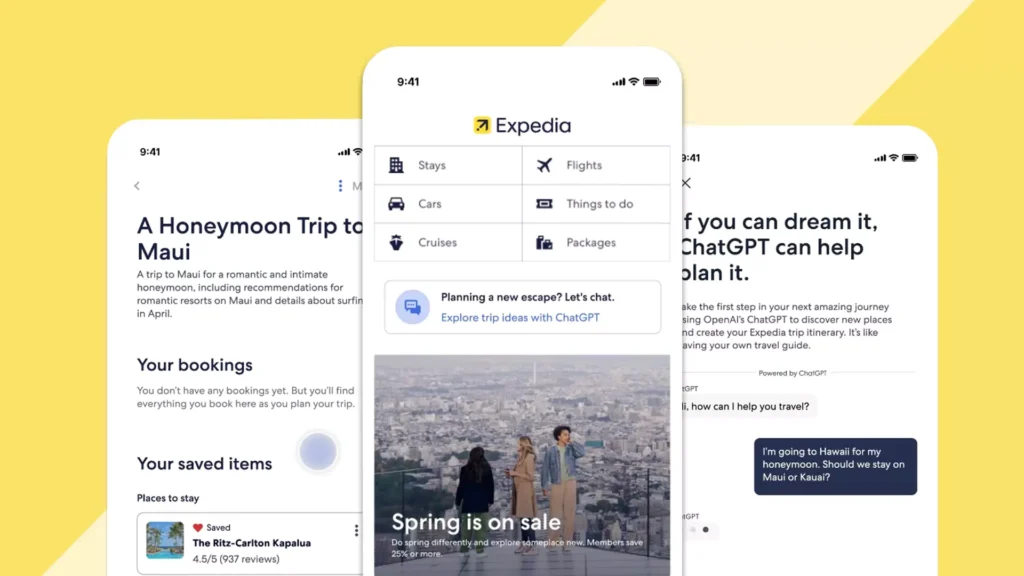
Leveraging Chatbot Marketing for Administrative and Tutoring in Education
Chatbots are great for handling school stuff like schedules and campus events, which helps everything run a lot smoother.
They also double up as tutors, quickly answering school-related questions, helping with study materials, and offering personalized learning tips.
Take Georgia State University, for example. They use a chatbot named “Pounce” to assist with admissions, financial aid, and course registration. Pounce can answer common questions, give out deadline info, and help students with the enrollment process.
It makes everything a whole lot easier and more efficient for their students.
Chatbot Marketing & Strategies
Effective Strategies for Lead Generation with Chatbots
Chatbots are really good at capturing and qualifying leads. They talk to users in real-time, ask useful questions, and direct them to the right resources or sales teams. This helps businesses reach potential customers early, which can increase conversion rates.
For instance, chatbots can ask users about their needs and guide them to the right information or connect them with sales teams.
By using conversational AI in lead generation, businesses can engage users early in the sales process. This keeps potential customers interested and boosts the chances of converting them into clients.
Chatbot Marketing Strategy #1: Gamification and Interactive Quizzes
Gamification is adding game-like elements to make things fun. Drift does this by using interactive quizzes in their chatbots. Instead of boring forms, users get to play a quiz.
Because of this engaging approach, this approach grabs attention and makes users more interested. As a result, Drift’s conversion rates go up. Quizzes keep people engaged better than traditional methods.
Chatbot Marketing Strategy #2: Personalized Content Recommendations
HubSpot uses chatbots to understand what users like. Based on what users are interested in and where they are in their buying process, the chatbot suggests things like blog posts, ebooks, and webinars.
This smart approach helps. It keeps leads interested and moves them along in the sales process, making chatbot marketing more effective.
Chatbot Marketing Strategy #3: Contextual Lead Capture
Intercom uses chatbots to grab leads at the perfect times. For instance, if someone is checking out pricing, the chatbot might offer to connect them with a sales rep.
This timing trick works really well. Intercom’s chatbots are better at turning visitors into leads because they engage people when it’s most useful.
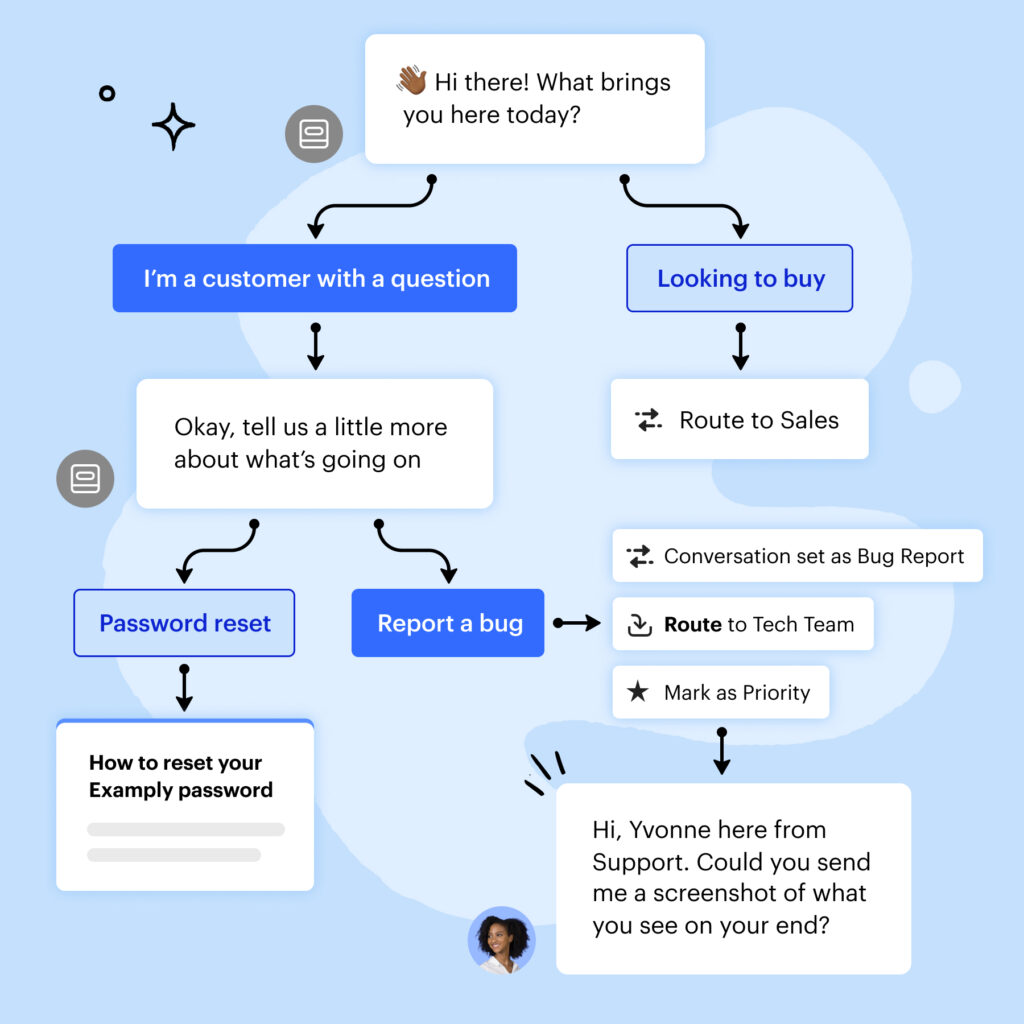
Chatbot Marketing Strategy #4: Multilingual Lead Generation
Zendesk’s chatbots speak many languages. This means they can reach and capture leads from different countries.
Because of this, Zendesk’s chatbots do great in places where language can be a problem. They make it easier to connect with people from all over the world.
Chatbot Marketing Strategy #5: Proactive Lead Outreach
Salesforce uses chatbots to reach out to website visitors who fit their ideal customer. These chatbots use info like company details and what visitors are looking at.
This approach helps Salesforce’s sales team focus on the best leads. As a result, they see better conversion rates.
Best Practices for Personalizing Chatbot Interactions in Chatbot Marketing
When chatbots are personalized, they use user info to make chats more relevant.
Personalization means chatbots use what they know about users, like their interests and browsing history. For instance, if a user likes certain products, the chatbot might suggest similar ones. This helps make the chat more engaging and useful.
Use Natural Language Processing (NLP)
NLP, or Natural Language Processing, helps chatbots understand and respond to human language in a more natural way.
It helps the chatbot figure out what users are asking and gives accurate answers based on their needs. So, if someone asks about a product or service, NLP makes sure the chatbot provides the right info.
Leverage Sentiment Analysis
Sentiment analysis helps chatbots understand how users are feeling by reading the tone of their messages.
If a user sounds frustrated or upset, the chatbot can respond with empathy or support. For instance, if the chatbot picks up on frustration, it might offer help or reassurance. This makes interactions more personal and supportive.
Personalize Using Customer Data and Preferences
Personalizing with customer data means using things like their name, location, past purchases, and interests to make the chatbot feel more personal.
For example, the chatbot can greet users by name or suggest products based on what they’ve bought before. This makes the experience feel more tailored and interesting for each person.
Provide Dynamic and Contextual Responses
Make sure the chatbot gives options based on what the user says. For example, if someone asks about shoes, the bot can show a few choices. Then, if they pick one, it can tell them more, like price or sizes. It’s like having a real person helping you, but faster. So, if you’re shopping online, the bot makes it way easier to find what you need without searching forever.
Utilize Personalization Tokens
Use personalization tokens like {name}, {company}, or {product} to insert specific information about the user or your business into the chatbot’s messages. This customization makes the interactions feel more tailored to each individual.
A/B Test and Analyze Performance
Conduct A/B testing to compare different versions of the chatbot’s messages, design, and features. Use metrics like click-through rate, conversion rate, and customer satisfaction to evaluate which approaches are most effective at personalizing the experience.
Continuously Improve Based on User Feedback
Regularly gather user feedback through surveys and use it to identify areas for improvement in the chatbot’s personalization capabilities. Continuously train and update the chatbot to improve its ability to deliver a personalized experience, thereby enhancing your chatbot marketing strategy.
Automating Follow-Up Campaigns and Promotions with Chatbots
Chatbots can be programmed to send follow-up messages, reminders, and promotional offers based on user actions or predefined triggers. For example, if a user abandons their shopping cart, the chatbot can follow up with a reminder or a discount offer. Automating these tasks helps maintain customer engagement without the need for manual intervention.
Key Performance Indicators (KPIs) for Measuring Chatbot Effectiveness
Key KPIs for measuring chatbot effectiveness include response time, user satisfaction, engagement rates, lead conversion rates, and retention rates. Tracking these metrics provides insights into how well the chatbot is performing and where improvements are needed to enhance its functionality.
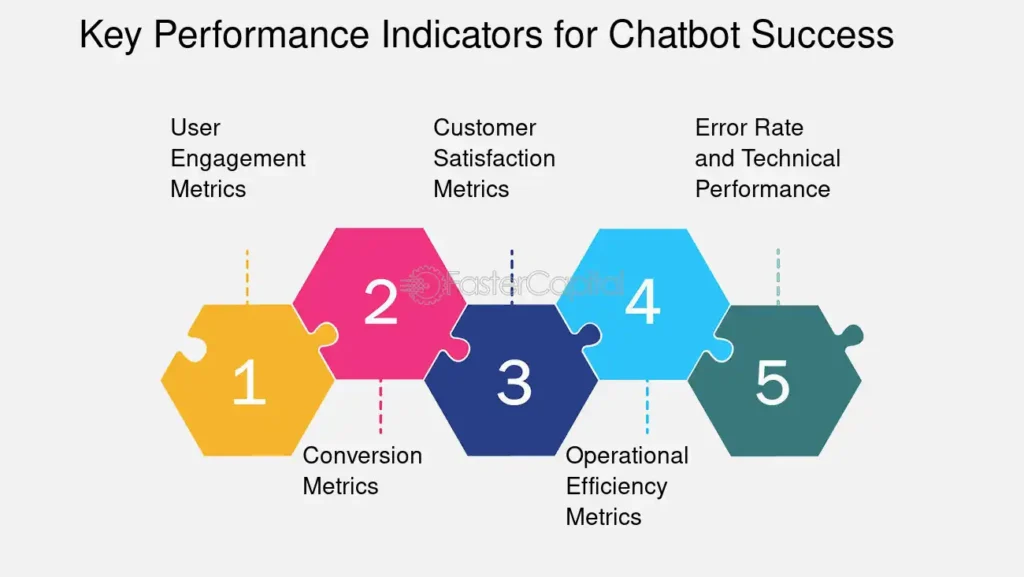
Using Feedback and Performance Data to Improve Chatbot Strategies
Businesses should regularly analyze chatbot interactions and performance data to identify areas for improvement. Gathering user feedback through post-interaction surveys and monitoring KPIs can highlight issues or opportunities for optimization. Continuous iteration based on this data ensures the chatbot remains effective and aligned with business goals.
Chatbot Marketing vs. Traditional Customer Support: Which Offers Better Customer Retention?
Comparing Response Times Between Chatbots and Traditional Support
Chatbots typically offer faster response times compared to traditional customer support methods, as they can handle multiple queries simultaneously and provide instant replies. This efficiency can lead to higher customer satisfaction and retention, especially for businesses that require 24/7 support.
User Experience: Chatbots vs. Human Agents
The user experience with chatbots differs from that with human agents in that chatbots provide quick, automated responses, while human agents offer more personalized and empathetic interactions. Chatbots are ideal for handling routine inquiries, while complex or emotionally charged issues may require human intervention for better resolution.
Impact on Customer Satisfaction and Retention
Chatbots can enhance customer satisfaction by providing quick, consistent, and accurate responses, which can improve retention rates. However, the lack of a human touch in chatbot interactions may affect satisfaction in scenarios requiring empathy or nuanced understanding. A balanced approach, using chatbots for simple tasks and human agents for complex issues, often yields the best results.
Cost Differences: Chatbots vs. Traditional Support Teams
Chatbots generally reduce costs associated with customer support by automating routine tasks and reducing the need for large support teams. While the initial investment in chatbot development may be significant, the long-term savings on staffing and operational costs can be substantial, making chatbots a cost-effective solution.
Scalability Benefits of Chatbots Over Traditional Support
Chatbots offer scalability by handling large volumes of inquiries without requiring additional resources. Unlike traditional support teams, which need to expand as the customer base grows, chatbots can manage increased demand seamlessly, making them ideal for businesses experiencing rapid growth.
Measuring the Effectiveness of Chatbots vs. Human Agents
Businesses can measure effectiveness by comparing KPIs such as customer satisfaction scores, resolution times, and retention rates between chatbot and human agent interactions. Additionally, analyzing feedback from customers who interacted with both channels can provide insights into their preferences and the impact on retention.
How Customer Service Chatbots Help Chatbot Marketing
Enhancing Overall Chatbot Marketing Efforts with Customer Service Chatbots
Customer service chatbots contribute to marketing by providing consistent brand messaging and improving customer satisfaction, which in turn enhances the overall customer experience. Satisfied customers are more likely to engage with marketing campaigns, share positive feedback, and become brand advocates, amplifying chatbot marketing efforts.
Benefits of Integrating Customer Service Chatbots into Chatbot Marketing Campaigns
Integrating customer service chatbots into marketing campaigns allows for immediate response to customer inquiries, personalized offers based on user data, and seamless transitions from customer service to sales. This integration helps create a unified customer journey, increasing the likelihood of conversions and boosting campaign success.
Providing Personalized Product Recommendations with Chatbots
Chatbots can analyze user data such as browsing history, previous purchases, and stated preferences to offer personalized product recommendations. By understanding customer behavior and preferences, chatbots can suggest products that are more likely to appeal to individual users, increasing the chances of a purchase.
Managing Customer Feedback and Reviews with Chatbots
Chatbots can proactively request feedback from customers after interactions or purchases, making it easy for customers to leave reviews. They can also monitor and respond to customer reviews in real-time, addressing concerns and thanking users for positive feedback, which helps manage the brand’s online reputation.
Improving Customer Retention Rates with Chatbots
Chatbots improve retention by providing timely and efficient customer service, offering personalized experiences, and maintaining consistent communication. By resolving issues quickly and providing relevant information, chatbots enhance customer satisfaction, leading to higher retention rates.
Analyzing Customer Interactions to Inform Marketing Strategies
Chatbots generate valuable data on customer interactions, preferences, and pain points. Analyzing this data can inform marketing strategies, allowing businesses to tailor campaigns to better meet customer needs and preferences.
This data-driven approach ensures that chatbot marketing efforts are targeted and effective.
Survey Chatbots: Shaping the Future of Marketing
Gathering Real-Time Customer Feedback with Survey Chatbots
Survey chatbots are great for getting quick feedback. They help businesses understand what customers think right away. By adding surveys to chat conversations, companies can get important insights right after a purchase or customer service chat.
Enhancing Market Research Through Automated Surveys
Chatbot surveys make market research easier and faster. They quickly gather accurate info and can be set up to ask specific questions. Plus, they can reach lots of people at once without needing a lot of manual work.
Engaging Users with Interactive Surveys
Chatbot surveys feel more like a chat than a regular survey. Since chatting feel natural, people are more likely to respond and give honest answers.
This means you can get better data and learn more about what your users really think.
Improving Response Rates with Conversational Surveys
Chatbots can make surveys feel less boring and more like a conversation, which leads to more people answering them. Because it’s easy and quick, users are more likely to share their thoughts.
The data from these surveys can help businesses understand preferences of their customers. With this info, businesses can improve their marketing, making it more personal and engaging. This, in turn, gets people more interested and leads to more sales.
Conclusion: Navigating the Future of Chatbot Marketing
Chatbot marketing is fantastic for businesses. It helps them connect with customers, work more efficiently, and drive growth. To get the most out of chatbots, companies need to understand the rules and see how different industries use them. Applying smart strategies can make a big difference.
As technology changes, don’t forget staying on top of the latest trends is key.
Looking to take your marketing to the next level? Explore our chatbot solutions, designed to boost customer engagement and deliver real results.

